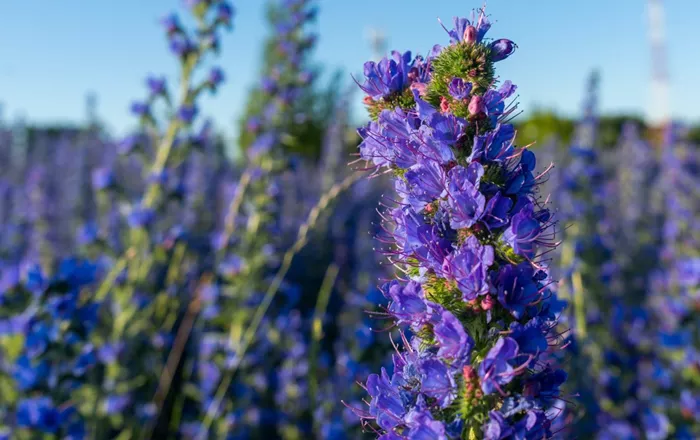Echium is a beautiful flowering plant that attracts attention with its vibrant colors and unique appearance. Known for its tall, spiky clusters of blue or purple flowers, Echium makes an excellent addition to any garden. After the plant has finished flowering, many gardeners wonder what steps to take next to maintain the plant’s health and enhance its performance in future seasons. This guide will explore the best practices for caring for Echium after flowering to ensure it thrives year after year.
Understanding Echium’s Life Cycle
Before jumping into the after-flowering care routine, it’s important to understand the natural life cycle of Echium. These plants are typically biennial, meaning they complete their life cycle in two years. During the first year, they focus on growing foliage and establishing a strong root system. In the second year, they flower and then die off after completing their reproductive cycle. However, some species are perennial and can flower multiple times before eventually fading. Knowing this will help in understanding how best to care for your Echium plant after it flowers.
Deadheading and Pruning After Flowering
One of the first tasks after Echium has finished flowering is to deadhead, or remove, the spent flowers. This is crucial because it helps the plant conserve energy, encouraging it to focus on root development and overall health. Using clean, sharp pruning shears, cut the flower stalks back to their base. This will also improve the overall appearance of the plant and reduce the risk of disease.
Cutting Back to Encourage New Growth
After deadheading, it is a good idea to cut the plant back by trimming any excess growth. Cutting the plant back not only tidies up the garden but also encourages the plant to develop a healthier structure. Make sure to leave some foliage so that the plant can continue photosynthesis. A well-pruned Echium will have stronger growth and may produce flowers again in the next season.
Assessing Watering and Feeding Needs
Once the plant has flowered, its water and feeding requirements change. While Echium thrives in well-drained soil, it’s important not to overwater it after flowering, as the plant may be more susceptible to root rot. Water the plant deeply but infrequently, ensuring the soil is dry before watering again. Additionally, after flowering, you can reduce feeding. Fertilize lightly with a balanced, slow-release fertilizer in the late spring to support new growth without over-stimulating the plant.
Dealing with Echium’s Biennial Nature
As mentioned earlier, many Echium species are biennial. This means they will die after flowering, leaving behind seeds to continue their life cycle. If your Echium is biennial and has flowered, you can either remove it entirely after it dies or allow it to self-seed. If you want to propagate the plant, you can collect the seeds from the flower heads and sow them for the next season’s growth.
Propagating Echium: How to Grow From Seed
For gardeners interested in keeping their Echium plants in the garden year after year, propagation from seed is a great option. After the plant has finished flowering and has produced seeds, collect the seeds and store them in a cool, dry place. When the time comes, sow the seeds indoors before the last frost. This early start helps the seedlings grow strong enough to be transplanted outdoors once the weather warms up.
Protecting Your Echium from Pests and Diseases
Once your Echium has finished flowering, it’s important to keep an eye on the plant for signs of pests or disease. Overwatering and high humidity can lead to fungal issues, so ensure your plant has proper air circulation. Aphids, slugs, and snails are common pests that might target your Echium. Regular inspection and prompt action can prevent significant damage to your plant. Consider using organic pest control methods, like neem oil or insecticidal soap, to protect your garden.
Mulching to Improve Soil Health
After flowering, consider adding mulch around the base of your Echium to help improve soil health and retain moisture. Mulch also helps to suppress weeds and keep the roots cool during the warmer months. Choose an organic mulch, such as shredded bark or compost, and apply a thin layer around the plant. Make sure to leave space around the stem to avoid rot.
Moving Your Echium for Better Growth
If your Echium is growing in a location where it’s not thriving, or if the soil quality is poor, you may want to transplant it. Transplanting Echium after flowering can give it a better chance to grow and flower again. When doing so, be sure to dig up the root ball carefully, keeping as much of the root system intact as possible. Replant it in a well-drained spot with plenty of sunlight and nutrient-rich soil for the best results.
Winter Care for Echium
If you live in an area with cold winters, you may need to protect your Echium during the colder months. While some varieties are more tolerant of frost than others, it’s generally a good idea to provide some winter protection. Consider covering the plant with a frost cloth or creating a makeshift shelter to shield it from extreme cold. For plants that are truly frost-sensitive, you may want to bring them indoors or treat them as annuals.
Conclusion
After Echium has finished flowering, it’s essential to care for it properly to ensure it remains healthy and vibrant in the coming months. By following these simple steps—deadheading, pruning, managing water and nutrients, and considering propagation—you can keep your Echium thriving. Whether you choose to let the plant self-seed, propagate it from cuttings or seeds, or replant it in a better location, these practices will help you enjoy the beauty of Echium for years to come.


